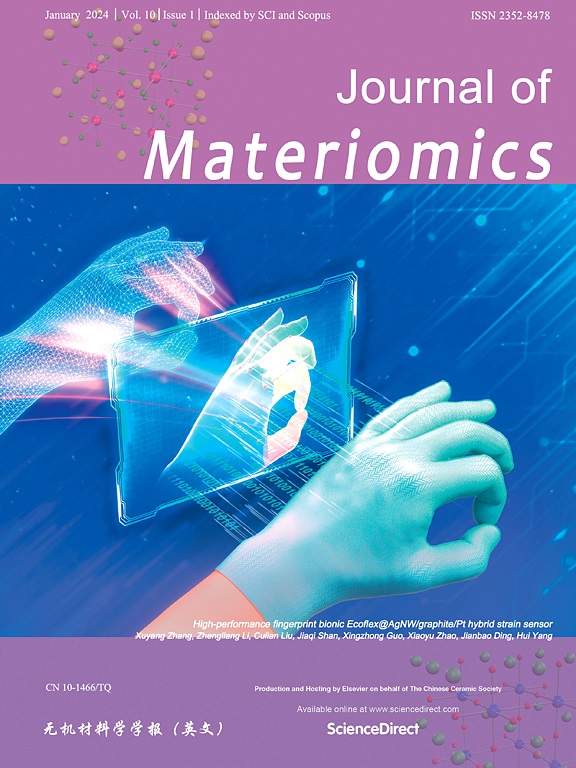Enhancement in conduction loss induced by morphology engineering for excellent electromagnetic wave absorption
IF 8.4
1区 材料科学
Q1 CHEMISTRY, PHYSICAL
引用次数: 0
Abstract
Understanding the microstructure-property relationship from the microscopic and macroscopic perspectives, instead of semi-empirical rules, can facilitate the design of microcosmic morphology to adjust the impedance matching and dielectric loss of the carbon-based materials, which are still lacking so far. In this study, a clear correlation between microstructure and conduction loss was revealed in agarose-derived carbon using a facile salt-etching strategy, in which ferric nitrate acted more as a morphology modifier for bulky carbon rather than a component regulator. Specifically, with the increasing amount of ferric nitrate, the original smooth bulky carbon was etched with caves, which gradually enlarged in size and depth and thus thinned in wall, and eventually transformed into a three-dimensional (3D) interconnected cellular structure, accompanied by a gradual increase in conductivity. Benefiting from the optimal impedance matching and strong conduction loss originating from the unique 3D cellular structure of agarose-derived carbon, AF-3 exhibited super-wide and strong absorption with an effective absorption bandwidth of 7.28 GHz (10.32–17.60 GHz, 2.9 mm) and a minimum reflection loss of −46.6 dB (15.6 GHz, 2.5 mm). This study establishes the relationship between microstructure, dielectric properties, and loss mechanism in carbon-based materials and also provides a new insight into the fine modulation of EMW-absorbing properties from morphological design.

形态学工程提高了电磁波吸收的传导损耗
从微观和宏观的角度来理解碳基材料的微观结构-性能关系,而不是半经验规律,可以促进微观形貌的设计,以调节碳基材料的阻抗匹配和介电损耗,这是目前尚缺乏的。在这项研究中,通过简单的盐蚀刻策略揭示了琼脂糖衍生碳的微观结构与传导损失之间的明确相关性,其中硝酸铁更多地作为大块碳的形态改进剂而不是组分调节剂。具体来说,随着硝酸铁添加量的增加,原本光滑的块状碳被蚀刻出溶洞,溶洞的尺寸和深度逐渐增大,从而使壁变薄,最终转变为三维(3D)互联的细胞结构,同时电导率逐渐增加。得益于琼脂糖衍生碳独特的三维细胞结构所带来的最佳阻抗匹配和强传导损耗,AF-3具有超宽强吸收,有效吸收带宽为7.28 GHz (10.32 ~ 17.60 GHz, 2.9 mm),最小反射损耗为- 46.6 dB (15.6 GHz, 2.5 mm)。该研究建立了碳基材料的微观结构、介电性能和损耗机制之间的关系,并为从形态设计中精细调制emw吸收性能提供了新的见解。
本文章由计算机程序翻译,如有差异,请以英文原文为准。
求助全文
约1分钟内获得全文
求助全文
来源期刊

Journal of Materiomics
Materials Science-Metals and Alloys
CiteScore
14.30
自引率
6.40%
发文量
331
审稿时长
37 days
期刊介绍:
The Journal of Materiomics is a peer-reviewed open-access journal that aims to serve as a forum for the continuous dissemination of research within the field of materials science. It particularly emphasizes systematic studies on the relationships between composition, processing, structure, property, and performance of advanced materials. The journal is supported by the Chinese Ceramic Society and is indexed in SCIE and Scopus. It is commonly referred to as J Materiomics.
 求助内容:
求助内容: 应助结果提醒方式:
应助结果提醒方式:


